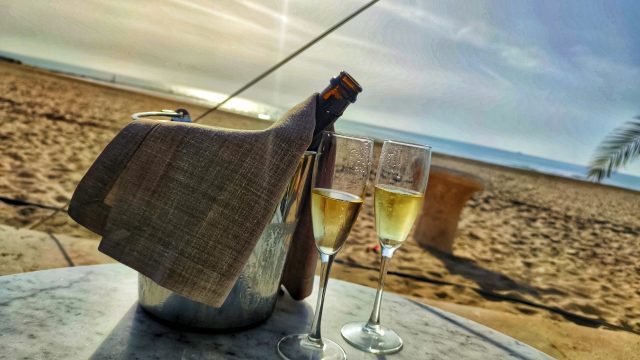Organic Cava sales skyrocket
Sales of the traditional method sparkling Spanish wine reached a “record high” of more than 250 million bottles last year, with organically-produced Cava making a sizeable chunk of this, according to figures from the DO Cava Regulatory Council.

Overall, in 2023, almost 252 million bottles of Cava were sold, a 1.09% (2.7m bottle) increase on 2022’s figure. The domestic market was a particular driving force, seeing a 4% year-on-year boost to sales.
Indeed, in Spain, Cava is the sparkling wine go have grown the most, now representing 87.7% of the total volume (3.9% up on 2022) and 78.8% of the value (a 10.6% increase). DO Cava Regulatory Council president Javier Pagés suggested: “The increase in quality sparkling wines in Spain reflects the fact that the appreciation of consumers is constantly growing, and they are looking for higher quality Cavas.”
In terms of export markets, Germany, known for its high sparkling wine consumption, leads the way, importing 31.3m bottles of Cava (up 4.14% on 2022), followed by the US, which imported 21.6m, a figure that actually represented a 13.48% decline on the previous year. Indeed, research from now-defunct alcohol delivery platform Drizly found that just 1% of the sparkling wine popped open by Americans on New Year’s Eve 2023 would be Cava, compared to Champagne, which had a 67% share, suggesting that Cava as a brand still has some major headway to make across the pond.
Perhaps surprisingly, given its relatively small drinking age population (around 9m), Belgium is the third biggest market for the Spanish fizz, importing 22m bottles in 2023, a 5.44% increase on 2022.
Just trailing behind was the UK, with a 5.38% increase in sales translating to 16.8m bottles sold. The most major growth, though coming from a low starting point, was in the emerging market of Brazil, where imports of Cava increased by a staggering 75.82%, though in reality this only represented a total of 1.9m bottles of Cava.
Partner Content
One major success story was the sales of organic Cava, which grew by 24.59% to 32.3m bottles – by contrast, sales of Cava produced using conventional viticulture dipped by 1.65%. This is both indicative of growing consumer demand for organic products, but also of the growth of organic production in the D.O. – recent regulations have determined that all Cava de Guarda Superior has to be 100% organically produced by 2025. Other regulations for this quality tier include longer ageing requirements, which now sits at 18 months, having previously been 15.
“The new segmentation of Cava has given a boost to the sector,” argued Pagés.
Cava isn’t the only traditional method sparkling wine to be gaining ground, Crémant is also benefitting from cost-of-living pressures dampening Champagne sales.
Related reading:
Penedès to become world’s first 100% organic DO
Related news
Campo Viejo lets creative juices flow with new Art & Pasión experience




